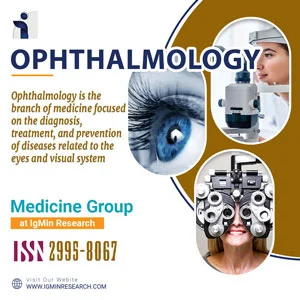Open Access Policy refers to a set of principles and guidelines aimed at providing unrestricted access to scholarly research and literature. It promotes the free availability and unrestricted use of research outputs, enabling researchers, students, and the general public to access, read, download, and distribute scholarly articles without financial or legal barriers. In this response, I will provide you with an overview of the history and latest resolutions related to Open Access Policy.
About
Ophthalmology is the specialized medical field dedicated to the study, diagnosis, and treatment of disorders related to the eyes and visual system. Ophthalmologists are experts in understanding the complex anatomy and functions of the eyes, as well as the various conditions that can affect vision. Their expertise spans from routine eye care to advanced surgical interventions for eye-related diseases.
The study of ophthalmology involves in-depth knowledge of ocular anatomy, physiology, and pathology. Ophthalmologists utilize cutting-edge diagnostic tools, imaging technologies, and surgical techniques to diagnose and manage a wide range of eye conditions. By addressing issues such as refractive errors, cataracts, glaucoma, and retinal diseases, ophthalmology plays a critical role in preserving and restoring visual health.
Medicine Group (1)

Why publish with us?
Global Visibility – Indexed in major databases
Fast Peer Review – Decision within 14–21 days
Open Access – Maximize readership and citation
Multidisciplinary Scope – Biology, Medicine and Engineering
Editorial Board Excellence – Global experts involved
University Library Indexing – Via OCLC
Permanent Archiving – CrossRef DOI
APC – Affordable APCs with discounts
Citation – High Citation Potential
Which articles are now trending?
Research Articles
- Semiclassical Potential Function of B–B Interaction: Reduction to Integrable Form
- Utilising Phytoremediation in Green Technologies: Exploring Natural Means of Environmental Clean-up
- Enhancing Material Property Predictions through Optimized KNN Imputation and Deep Neural Network Modeling
- Evaluating Digital Imaging Technologies for Anogenital Injury Documentation in Sexual Assault Cases
- Efficacy of Alternative Insecticides against Dusky Cotton Bug (Oxycarenus laetus) to Improve Yield Losses in Cotton Crops through Residue-based Bioassay
- Balancing Act: Exploring the Interplay Between Human Judgment and Artificial Intelligence in Problem-solving, Creativity, and Decision-making
Advertisement









